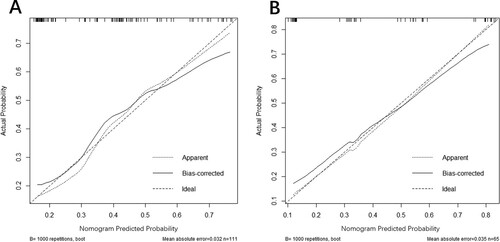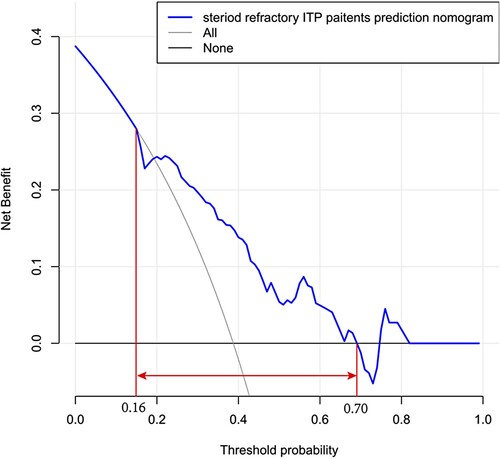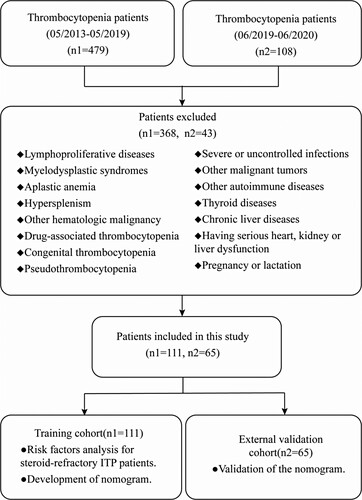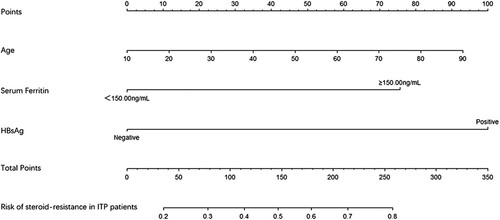Figures & data
Table 1. Characteristics of ITP patients in training and external validation cohort.
Table 2. Risk factors of steroid-refractory ITP patients in the training and external validation cohort.
Table 3. Multivariate logistic regression analysis for steroid-resistance in ITP patients.
Figure 3. Calibration plots of the nomogram for predicting steroid-resistance in ITP patients. (A) Calibration plots of the nomogram for the training cohort. (B) Calibration plots of the nomogram for the external validation cohort. The diagonal dotted line represents a perfect prediction by an ideal model. The solid line stands for the performance of the nomogram, of which a closer fit to the diagonal dotted line represents a better prediction of the nomogram.

Figure 4. ROC curve analysis to predict steroid-resistance in ITP patients. (A) ROC curve for the training cohort. (B) ROC curve for the external validation cohort.

Figure 5. Decision curve analysis for steroid-refractory ITP patients. The y-axis represents the net benefit, and the x-axis represents the steroid-refractory threshold probability in ITP patients. The blue line represents the prediction nomogram of steroid-refractory ITP patients. The gray line represents the assumption that all patients were steroid-resistant. The black line represents the assumption that no patients were steroid-resistant. The decision curve showed that predicting the steroid-refractory risk in ITP patients using this nomogram with a range of the threshold probability between >16% and <70%.



